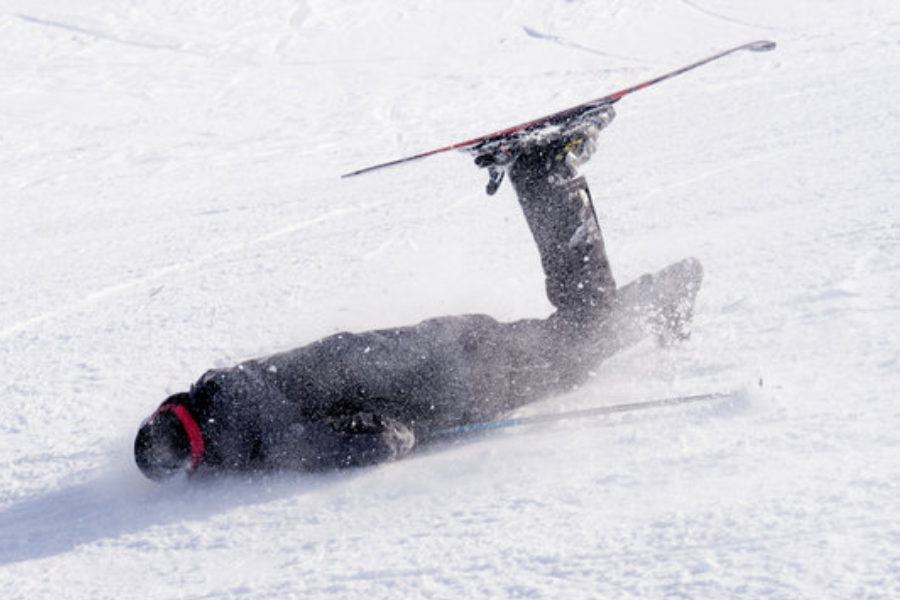Millions of fans worldwide are drawn to the popular winter sport of skiing.The thrill of gliding down snow-covered mountains is unmatched, but the sport also comes with inherent risks. Every year, ski accidents result in injuries ranging from minor sprains to severe head trauma. While some incidents occur due to skier error, others are influenced by environmental conditions, equipment failure, or collisions with other skiers.
Understanding the causes and consequences of ski accidents can help skiers take necessary precautions and minimize risks. This article explores the different types of ski accidents, their common causes, risk factors, and effective safety measures to prevent injuries on the slopes.
Common Causes of Ski Accidents
Ski accidents can happen for various reasons, and most incidents involve a combination of factors. One of the most common causes is loss of control. Many beginners struggle with balance and coordination, making them more prone to falls. However, even experienced skiers can lose control when skiing at high speeds, attempting risky maneuvers or encountering unexpected obstacles.
Another major cause is poor weather and snow conditions. Slippery ice patches, deep snow, and sudden weather changes can increase the likelihood of accidents. Reduced visibility due to fog or snowfall also plays a role in skier collisions and falls.
Equipment failure is another factor contributing to ski accidents. Worn-out skis, improperly adjusted bindings, and faulty helmets can lead to serious injuries. It is essential to check and maintain skiing gear regularly to ensure safety on the slopes.
Finally, skier behavior plays a crucial role. Reckless skiing, ignoring safety signs, and not following skiing etiquette can lead to dangerous collisions. Skiing under the influence of alcohol or drugs further increases the risk of accidents.
Also Read: Entrenadora Fitness Marconfit: Transforming Lives with a Holistic Approach
Types of Ski Accidents and Injuries
Ski accidents can result in various types of injuries, some of which can be severe or even life-threatening. The most common injuries include sprains, fractures, and ligament tears, particularly in the knees and wrists.
Head injuries are among the most serious skiing-related injuries. Collisions or falls at high speeds can result in concussions or traumatic brain injuries (TBI). Although helmets provide protection, they do not eliminate the risk.
Spinal cord injuries are less common but can have devastating consequences. A severe fall or high-impact collision can damage the spine, leading to long-term disabilities or paralysis.
Shoulder injuries, including dislocations and fractures, frequently occur when skiers attempt to break their fall using their arms. Wrist fractures are also common for the same reason.
Apart from physical injuries, hypothermia and frostbite can occur if skiers get stranded in harsh weather conditions without proper clothing and protection.
Risk Factors That Increase the Likelihood of Accidents
Several factors can increase the chances of ski accidents. One of the biggest risk factors is experience level. Beginners are more likely to lose control and fall, while experienced skiers might take greater risks that lead to severe injuries.
Speed is another major risk factor. Skiing at high speeds reduces reaction time, making it difficult to avoid obstacles or other skiers. The risk of injury is significantly higher in high-speed crashes.
Terrain also plays a crucial role in ski accidents. Steep slopes, tree-lined paths, and ungroomed backcountry areas pose higher risks than well-maintained trails. Skiers who venture into unfamiliar or difficult terrain without proper preparation put themselves in danger.
Another critical risk factor is fatigue. Tired skiers have slower reaction times and are more likely to make mistakes. Taking regular breaks and staying hydrated can help reduce fatigue-related accidents.
Finally, the use of improper or poorly maintained equipment increases the likelihood of injuries. Skiers should ensure that their gear is in good condition and properly fitted before heading out onto the slopes.
Preventing Ski Accidents: Safety Tips for Skiers
While skiing always carries some level of risk, following proper safety measures can significantly reduce the chances of accidents. One of the most important safety tips is to wear a helmet. Studies show that helmets reduce the risk of head injuries by up to 60%.
Proper warm-up exercises before skiing help prepare the body for physical exertion and reduce the risk of muscle strains. Strengthening exercises for the legs and core muscles can also improve balance and stability.
Choosing the right ski runs according to skill level is essential. Beginners should stick to green and blue runs before attempting more challenging trails. Skiing within personal limits and avoiding excessive speed can prevent loss of control.
Being aware of your surroundings and following skiing etiquette helps prevent collisions. Skiers should yield to those ahead of them, avoid stopping in blind spots, and stay on designated trails.
Checking weather conditions before heading out is another crucial step. Avoid skiing in poor visibility, strong winds, or icy conditions that increase accident risks.
Using well-maintained and properly fitted equipment is also essential. Bindings should be adjusted according to the skier’s weight and ability level to prevent injuries from falls.
Finally, staying hydrated and taking breaks when needed can help maintain focus and prevent fatigue-related accidents.
What to Do in Case of a Ski Accident
If a ski accident occurs, it is important to stay calm and assess the situation. If the injured person is conscious and able to move, they should slowly make their way to a safe area. However, if they experience severe pain, dizziness, or numbness, they should remain still and wait for medical assistance.
Calling for ski patrol is the best course of action in serious accidents. Most ski resorts have emergency teams trained to handle injuries and transport injured skiers safely. It is also essential to keep the injured person warm and reassure them while waiting for help.
In the case of minor injuries, applying first aid immediately can prevent further complications. Ice packs help reduce swelling, and bandages can stop bleeding from cuts or abrasions. Seeking medical attention after a fall, even for seemingly minor injuries, is recommended to rule out internal damage.
Conclusion
Skiing is an exhilarating sport, but it comes with inherent risks. Understanding the common causes of ski accidents, such as loss of control, poor weather conditions, equipment failure, and reckless behavior, can help skiers take necessary precautions. By following essential safety measures—wearing a helmet, using well-maintained equipment, choosing appropriate ski runs, and being aware of surroundings—skiers can minimize the likelihood of injuries. Additionally, knowing what to do in case of an accident ensures a quick and effective response. With proper preparation and responsible skiing, enthusiasts can enjoy the slopes safely while reducing the risk of accidents.
FAQs
1. What are the most common injuries in ski accidents?
The most common injuries include sprains, fractures, ligament tears (especially in the knees and wrists), head injuries, and shoulder dislocations. Severe accidents may result in spinal cord injuries or concussions.
2. How can I prevent ski accidents?
To prevent ski accidents, wear a helmet, choose ski runs that match your skill level, maintain your equipment, follow skiing etiquette, check weather conditions, and avoid excessive speed. Strengthening exercises and proper warm-ups also help improve balance and stability.
3. What should I do if I witness a ski accident?
If you witness a ski accident, check on the injured person and ensure they are safe from further danger. If the injury is serious, call ski patrol immediately. Keep the injured skier warm and provide reassurance while waiting for medical help.
4. Are ski accidents more common among beginners or experienced skiers?
Both beginners and experienced skiers are at risk, but for different reasons. Beginners are more likely to fall due to a lack of control and experience, while advanced skiers may attempt risky maneuvers or ski at high speeds, increasing the severity of potential injuries.
5. Does wearing a helmet completely prevent head injuries in skiing?
While helmets significantly reduce the risk of head injuries, they do not eliminate them entirely. Skiers should still exercise caution, avoid reckless behavior, and stay within their limits to prevent serious head trauma.
6. What role does weather play in ski accidents?
Weather conditions like icy slopes, deep snow, fog, and strong winds can increase the likelihood of ski accidents. Reduced visibility and unstable snow surfaces make it harder for skiers to maintain control and avoid obstacles.
7. How often should I check my ski equipment?
Ski equipment should be checked before each use to ensure it is in good condition. Regular maintenance, including tuning skis, adjusting bindings, and inspecting helmets, helps prevent equipment-related accidents.
Also Read: Steve Chen Net Worth: A Deep Dive into the Entrepreneur’s Journey and Success



